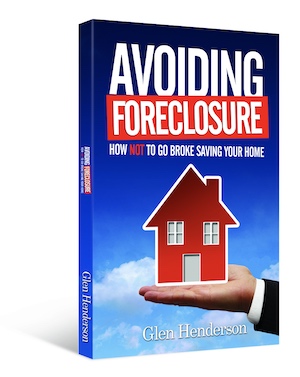What Happens to Credit Score After a Loan Modification?
It’s a feeling of relief. Your loan modification has been approved, and you can avoid the pain of foreclosure. But even though you can now make payments, stay in your house, and avoid foreclosure, your loan modification still might affect your credit score more than you think. In this post, we’ll explore what happens to your credit score in loan modification and what you can do to boost your credit score after loan modification occurs.
Loan Modification and Your Credit Score
Types of Loan Modifications
Like pretty much anything that happens to you financially, your loan modification will be reported on your credit score. When a loan modification appears on your credit report, it usually damages your credit score. While the impact is a lot less severe and permanent than foreclosure, it’s still a real threat.
There are two kinds of ways that a loan modification can hurt your score. Some mortgage modification programs simply require a missed payment to be imminent, meaning you have proof that you are soon going to miss a payment. If you can get approved for this program, you’ll get a loan modification without actually missing a single mortgage payment. This is the best case scenario for your credit score, and is another reason to pursue loan modification before you’ve missed a payment, and not after.
On the other hand, some loan modification programs will only allow you to apply after you’ve missed a payment. In this case, if you are approved, you’ll have both the missed payment (or payments) on your credit score as well as the loan modification.
How Many Points Will My Score Drop?
If approved for a loan modification, you could see your credit score drop by anywhere from 30 to 100 points. It depends on your starting credit score and your credit history. If you have a relatively high credit score and a flawless credit history, and you get a loan modification without missing a single payment, you’ll be much closer to the 30 point drop. If you’ve got a lower credit score, even something around 700, and you’ve got a couple of spots on your history, then you could see a much bigger drop.
Ultimately, a loan modification isn’t going to be as bad as foreclosure. But keep in mind that one of the ways that it’s not as bad as foreclosure is the fact that you still have a home loan that you get to make payments on. If you continue to make payments on the modified loan, that credit score will begin creeping back up. One of the main problems with what foreclosure does to your credit score is that it completely prevents you from making on-time loan payments in the future, which makes it really tough to climb back out of a damaged credit score.
The drop to your credit can be intimidating. But if it’s shortly after you modify, don’t worry about it. Just keep making on-time payments and you’ll get out of the hole.
Improving Credit Score After Loan Modification
Make On-Time Payments
This is the biggest thing you can do to improve your credit score and prevent it from cratering even further. If you miss payments or head toward foreclosure after modification has gone through, you’ve kicked the ladder out from under your credit score. It will be really tough to climb out, and it could take a decade.
But if you make the loan modification and are then able to make consistent payments on the modified loan, you will eventually climb back toward your original credit score.
Improve Your Credit Utilization Ratio
This is the biggest thing that you can do after loan modification to improve your credit score over time. Your credit utilization ratio is the amount of credit you have versus the amount of credit that you’re using. If you are approved for $10,000 in credit and owe $5,000, your credit utilization ratio is 50%. You’re currently utilizing 50% of the credit that you are approved for.
There are two ways to improve your utilization ratio. First, you can pay back the debt that you owe. In our example if you pay back $2,000 on your debt, you would only owe $3,000, which means your credit utilization ratio would go to 30%. Alternatively, you could get approved for an additional $10,000 in credit. Without paying off any debt, your credit ceiling would go up to $20,000 and your utilization ratio (on $5,000 debt) would be only 25%.
Ideally, your ratio is under 30%.
Be Patient
It can be frustrating to go through all the right steps and make every single payment on time and still see your score drop by 50 points. But it’s far better than foreclosure, and unlike foreclosure, you keep your house and have a path toward credit restoration. Be patient, make the payments, and keep moving in the right direction.




